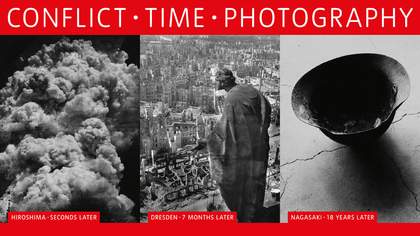In June of 2008, we travelled to Afghanistan to be embedded with British Army units on the front line in Helmand Province. We arrived during the deadliest month of the war. On the first day of our visit a BBC fixer was dragged from his car and executed, and nine Afghan soldiers were killed in a suicide attack. The following day, three British soldiers died, pushing the number of British combat fatalities to 100. Casualties continued until the fifth day when nobody died.
The embedding system, whereby journalists are attached to military units, led to a sanitised view of the so-called War on Terror and this was something we were deeply concerned about. With this in mind we approached the Ministry of Defence and lied to them, claiming we were photojournalists. If we had said we were artists we would never have got permission to go to Afghanistan in 2008, which is very telling.
Eventually we managed to become embedded with the British Army but instead of taking a camera we used a roll of photographic paper 50 meters long and 76.2 cm wide, contained in a simple, lightproof cardboard box. We carried the box from our studio to the airport, where it was placed in the hands of the military all the way to the front line. When we arrived, we co-opted a Snatch land Rover – military vehicles that are hopelessly unprotected for the improvised explosive devices used by insurgents in Afghanistan. In the back of this little compartment were two small windows, so we just sat in fear, watching the landscape receding. This space became our darkroom.
In response to each event that would typically be recorded and disseminated in the media (and also to a series of more mundane moments, such as a visit to the troops by the Duke of York and a press conference), we instead unrolled a sevenmeter section of the paper and exposed it to the sun for 20 seconds - we weren’t concerned with what the images looked like, as long as they were different, the important thing was that the paper was physically in that place, bearing witness. The results deny the viewer the cathartic effect offered up by the conventional language of photographic responses to conflict and suffering; raising questions about authenticity as opposed to reproducibility. We also made a film documenting the journey of the box which amounts to an absurd performance in which the British Army, unsuspectingly, played the lead role. Co-opted into transporting the box of photographic paper from London to Helmand and back, these soldiers carry the box from one military base to another, on Hercules and Chinooks, on buses, tanks and jeeps. Like a barium test, the journey of the box reveals the dynamics of the military machine in its quotidian details, from the logistics of war to the collusion between the media and the military.
Just before we embarked on the project we came across a press image of the assasination of Benazir Bhutto being assassinated. It was taken by a photographer on the campaign tour with Bhutto, who was standing close by when a suicide bomber detonated his belt. He captured the exact moment of the explosion, but it wasn’t really an image as we understand it, just a spark of light and a blur. It stopped us in our tracks. It was a news photograph depicting an event, but was totally non-representational; devoid of information it simply functioned, alongside its caption, to bare witness. Likewise, the visual appearance of the images we made is in no way metaphorical – the red doesn’t represent blood, for example – it is purely indexical. All it is is a piece of paper.

